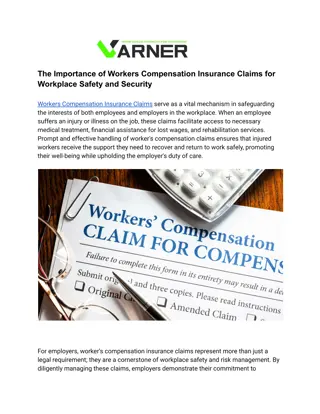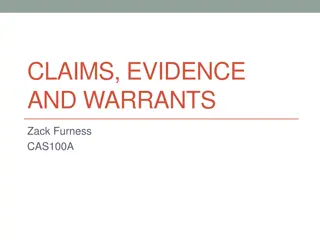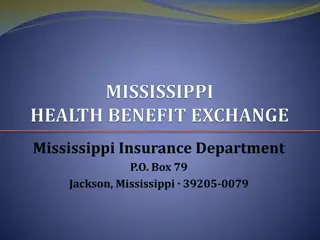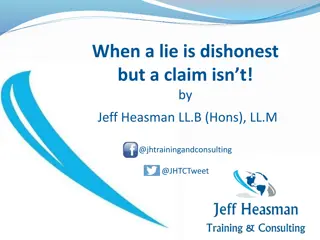Navigating Homeowners Insurance Claims Process After a Disaster
Understand how to navigate the homeowners insurance claims process effectively after a disaster such as a wildfire. Learn about the steps involved, including contacting your insurer, preparing for the adjuster's visit, determining settlement, selecting a contractor, and managing expectations. Helpful tips for documenting and safeguarding your belongings are also provided.
Download Presentation

Please find below an Image/Link to download the presentation.
The content on the website is provided AS IS for your information and personal use only. It may not be sold, licensed, or shared on other websites without obtaining consent from the author. Download presentation by click this link. If you encounter any issues during the download, it is possible that the publisher has removed the file from their server.
E N D
Presentation Transcript
Insurance: A Crucial Financial Safety Net Insurance drives economic growth by expediting recovery for policyholders. As financial first responders, property/casualty insurers paid $414.6 billion in claims during 2017. California wildfire claims are estimated at $12 billion for 2017. It is too early to estimate 2018 wildfire costs. Homeowners have options rebuild or buy new.
How the Claims Process Works Contact your agent or company to find out: What s covered under your homeowners policy Fire is a covered loss How to get ALE and temporary housing Keep receipts Coverage for property, contents, outbuildings and loss of use (Coverage A,B,C,D) A timeline for the claims process How to get estimates for rebuilding
Prepare for the adjusters visit: Write down questions about the claims process Give the adjuster pictures of your home and contents, or home inventory lists Ask for resources that will help with the home inventory process Get the adjuster s contact information for follow-up questions How Settlement is Determined: Replacement cost or actual cash value Extended replacement costs Building code upgrade Temporary living expenses - ALE
How to Select a Contractor Get written, detailed bids from licensed contractors Check references and licenses with the California Contractors State License Board Don t feel pressured to sign a contract Do NOT pay up front. Pay as work is completed and inspected Use your insurer as resource to review bids
What to Expect Your mortgage will still need to be paid You have two years to rebuild extensions are available Insurers will not non-renew the year following the loss Timeline for payments
TIP 1: TIP 3: Video or photograph your electronics, appliances and workout equipment. Note the number of TVs, computers/tablets. Save receipts for major purchases. Store key documents in fire-proof case. Keep home inventory video offsite or in the cloud. TIP 2: Video or photograph contents of drawers and closets. TIP 4: TIP 5: Describe your home s contents in video. Include price paid, purchase year and location. Remember to video/photograph what is in your garage.
Conduct an annual review of your insurance policy Call your agent or insurance company to discuss your policy and coverage options. They can assist you in determining the type of policy you should have and the proper amount of coverage for your home. Consider the current construction costs for building new homes in your neighborhood. like kind and quality. carry homeowners insurance. Know what your insurance policy covers The details matter. Check whether your homeowners policy pays replacement cost or actual cash value for a covered loss. Actual cash value takes depreciation into account. The replacement cost is the amount necessary to Check with loved ones that have retired and paid Maintain insurance If your home is paid off, make sure to maintain homeowners insurance. Don t be caught after a fire with no way to rebuild your home. Report home improvements Contact your agent or insurer to update your homeowners policy after home improvements or remodels. Insurance replaces like, kind and quality. If you update from linoleum to tile or add square footage, be sure to update your policy. rebuild the home with construction materials of off their mortgage to make sure they continue to Get coverage if you rent If you rent your home consider renters insurance. You can bundle renters with auto insurance.
Maintain insurance If your home is paid off, make sure to maintain homeowners Know what your insurance policy covers The details matter. Check whether your homeowners policy pays replacement cost or actual cash value for a covered loss. Actual cash value takes depreciation into account. The replacement cost is the home. Report home improvements Contact your agent or insurer to update your homeowners policy after home improvements or remodels. Insurance replaces with items of like, kind and quality. If you update from linoleum to tile or add square footage, be sure to update your policy. amount necessary to rebuild the home with construction materials of Conduct an annual review of your insurance policy Call your agent or insurance company to discuss your policy and coverage options. They can assist you in determining the type of policy you should have and the proper amount of coverage for your home. Consider the current construction costs for building new homes in your neighborhood. like kind and quality. Check with loved ones that have retired and paid off their mortgage to make sure they continue to carry homeowners insurance. Get coverage if you rent If you rent your home consider renters insurance. You can bundle renters with auto insurance. insurance. Don t be caught after a fire with no way to rebuild your
Questions & Answers Keep in Touch with I.I.I. & PCI janetr@iii.org Nicole.ganley@pciaa.net






























